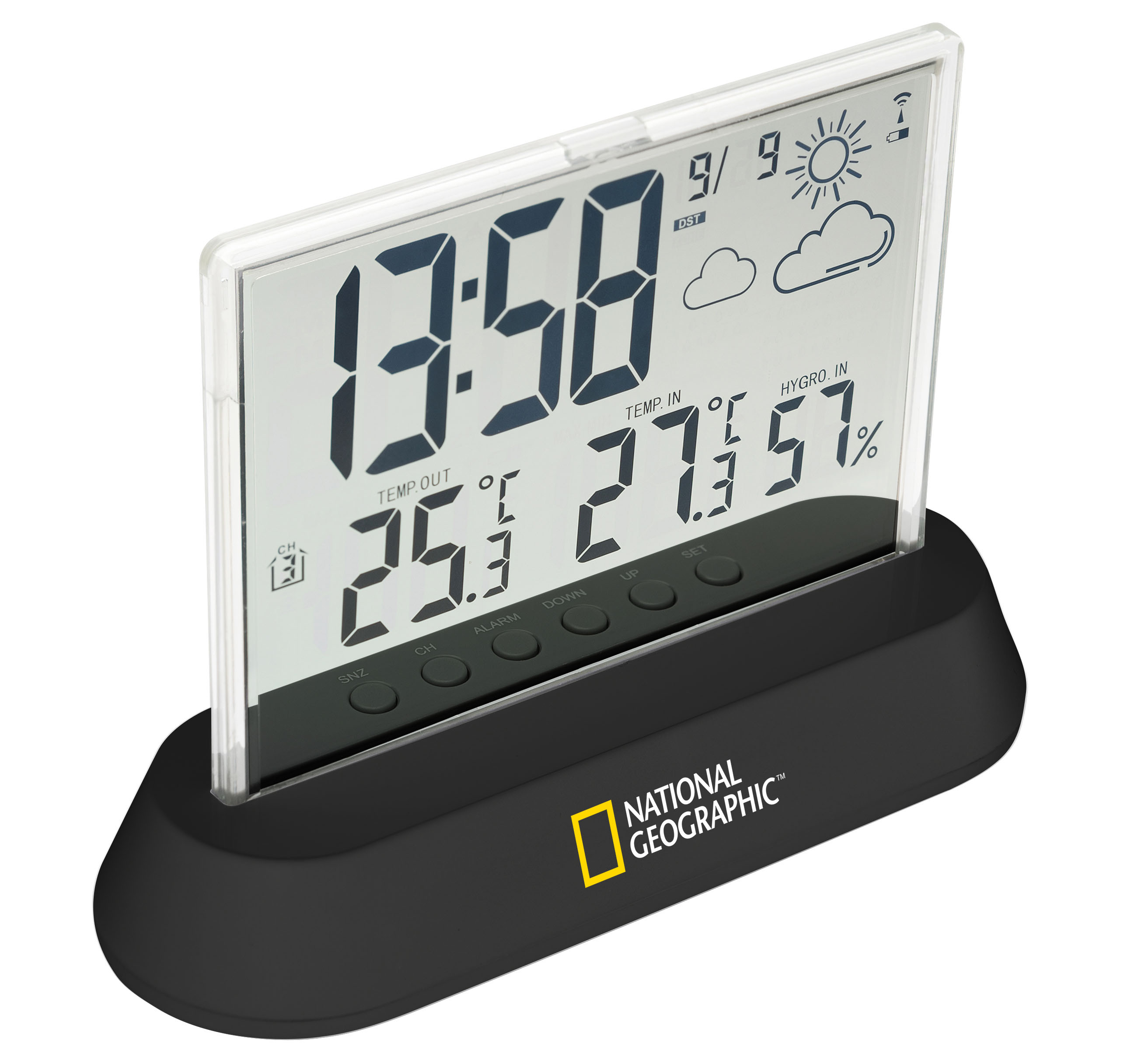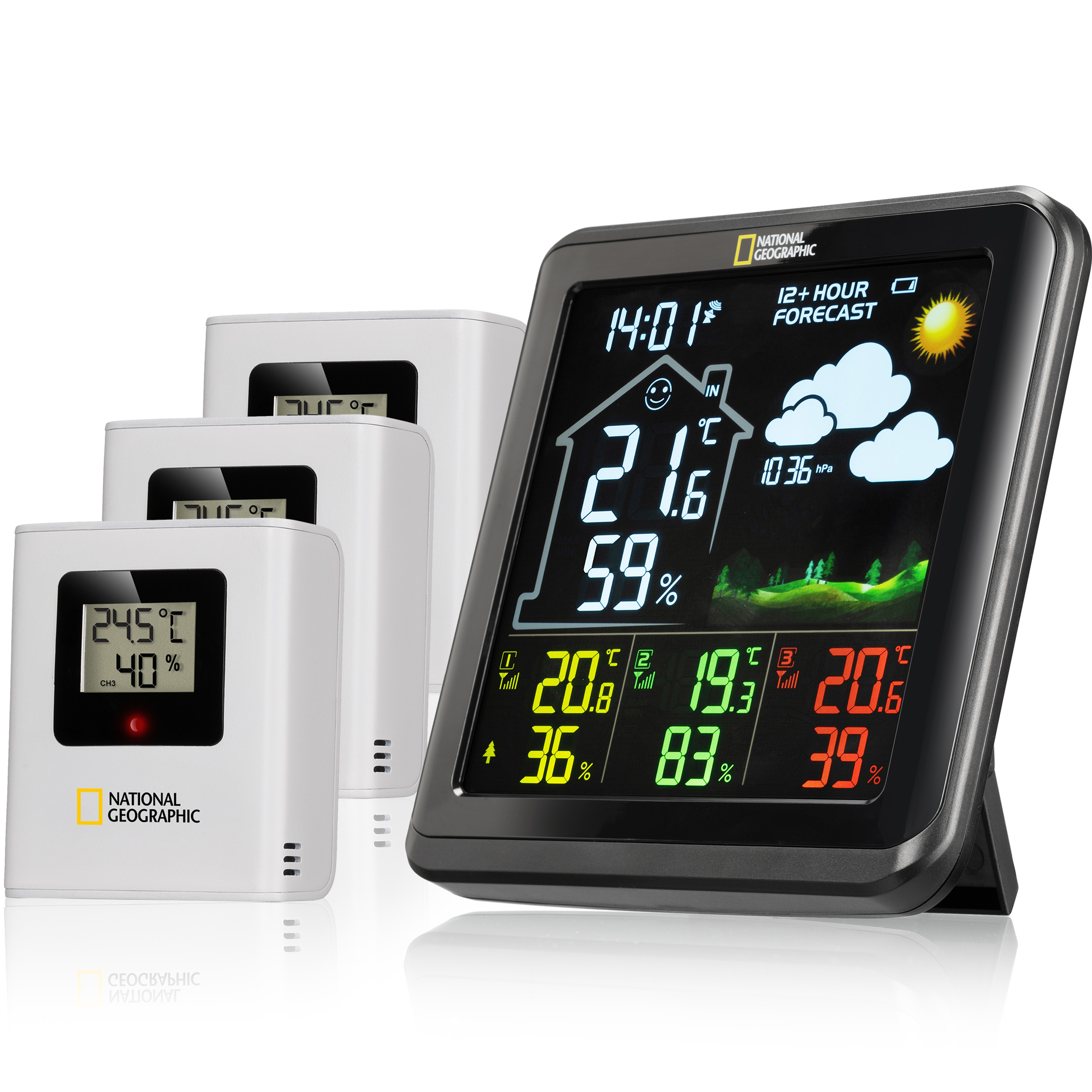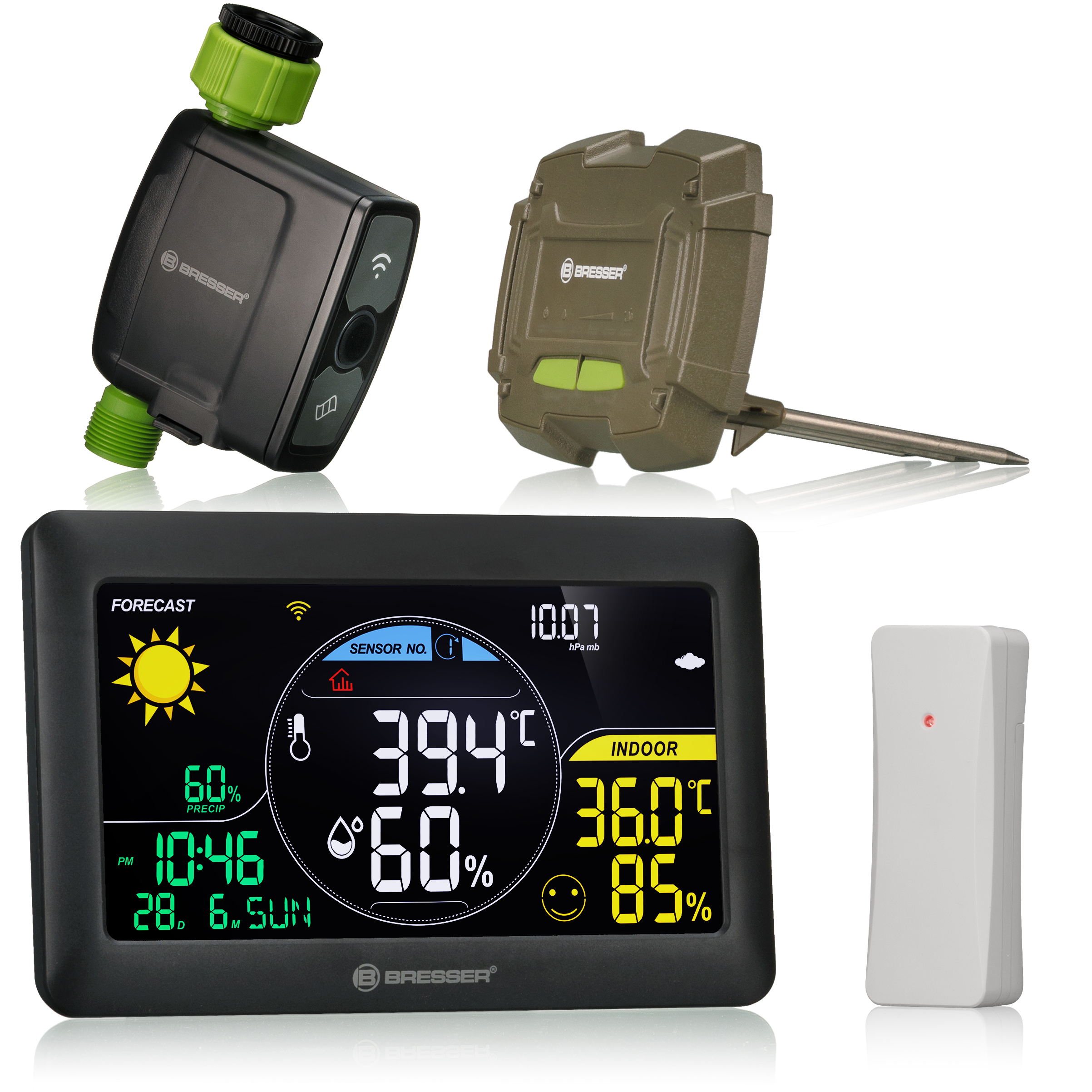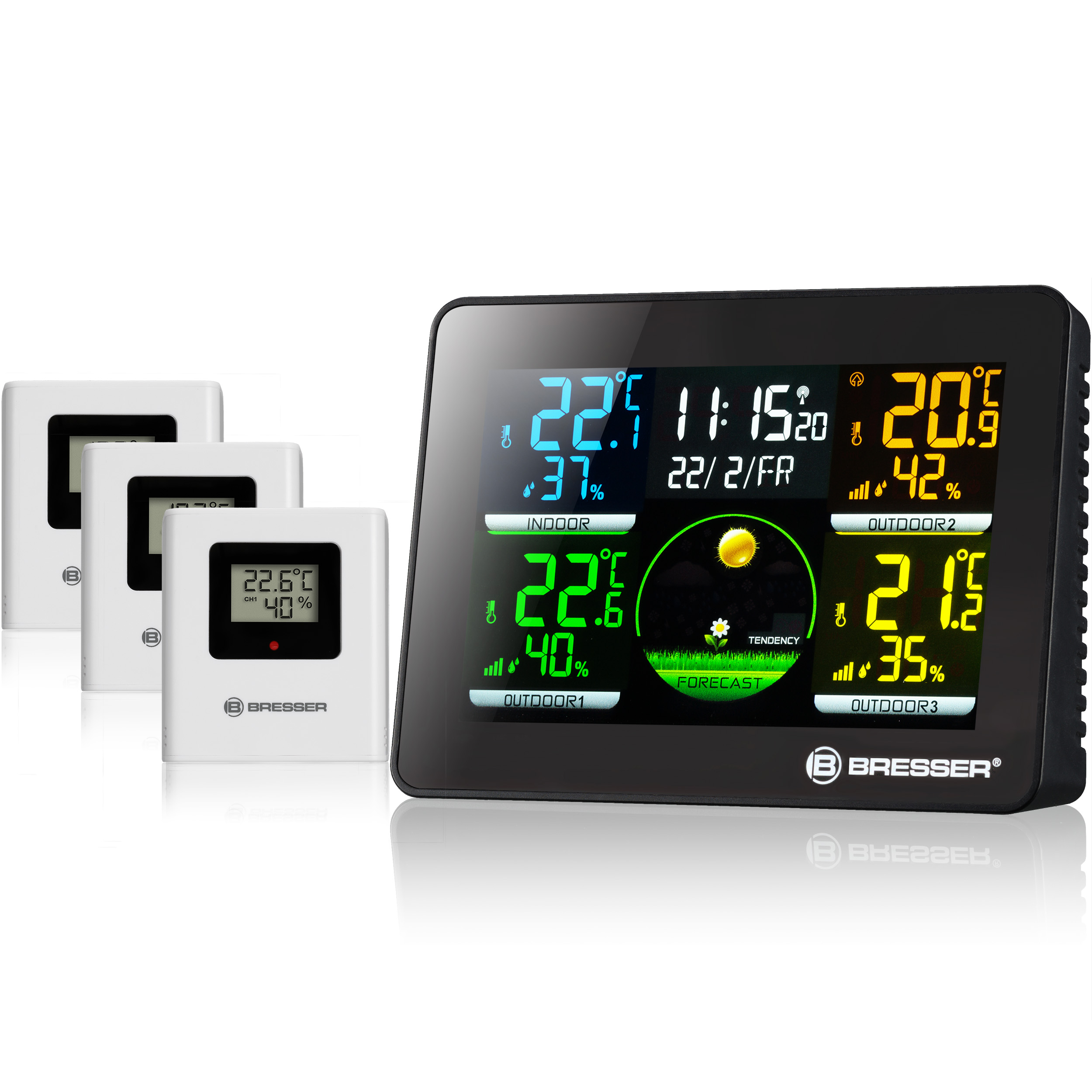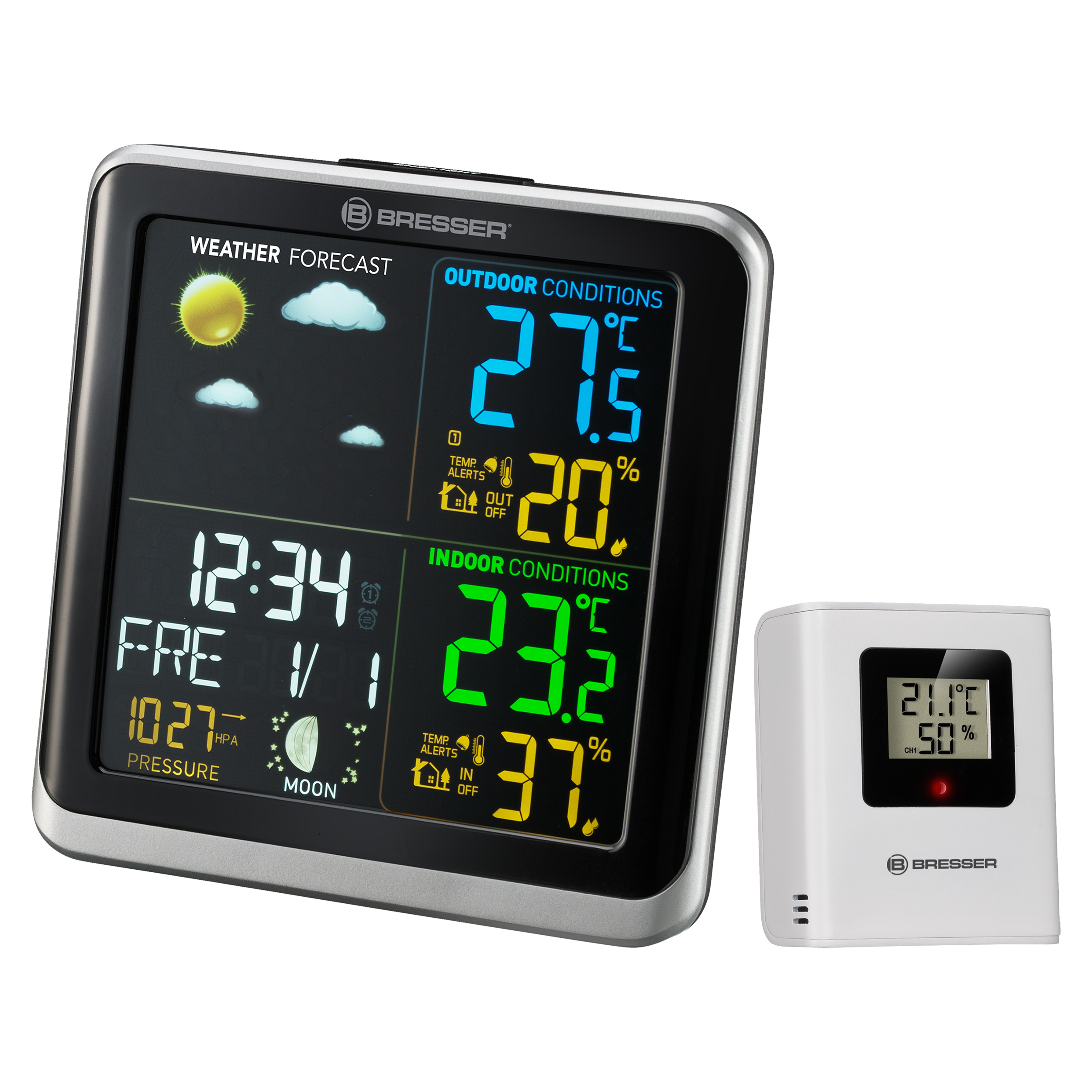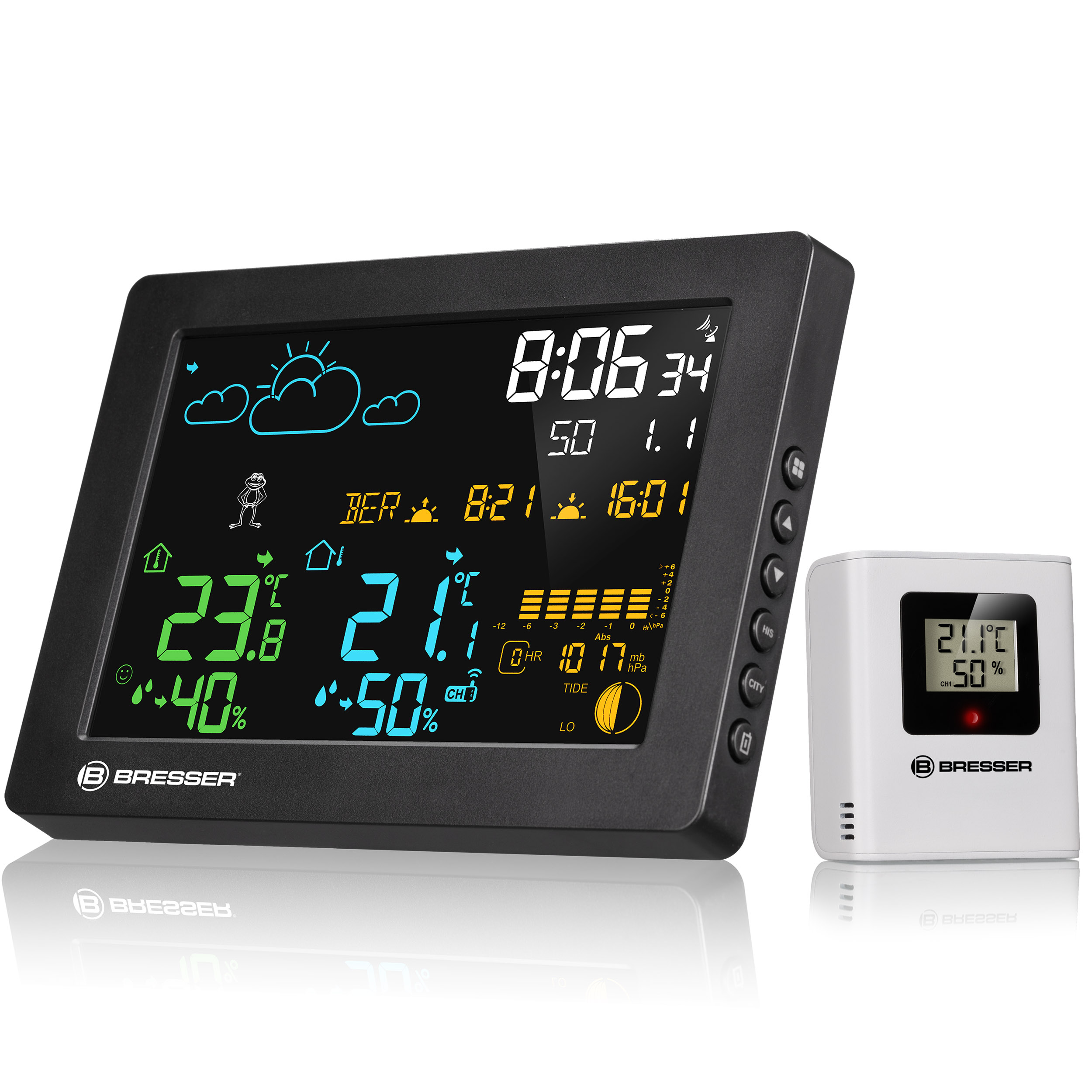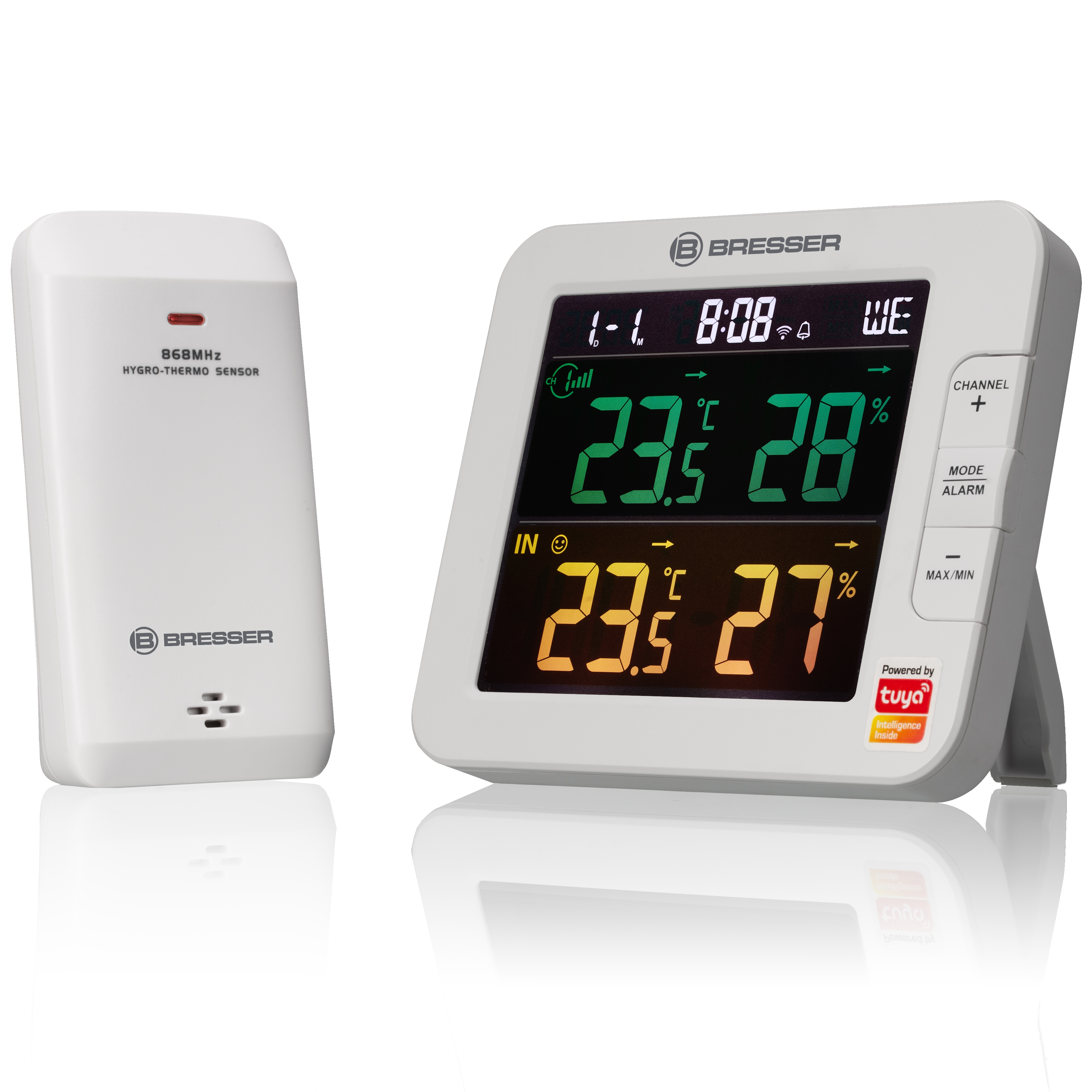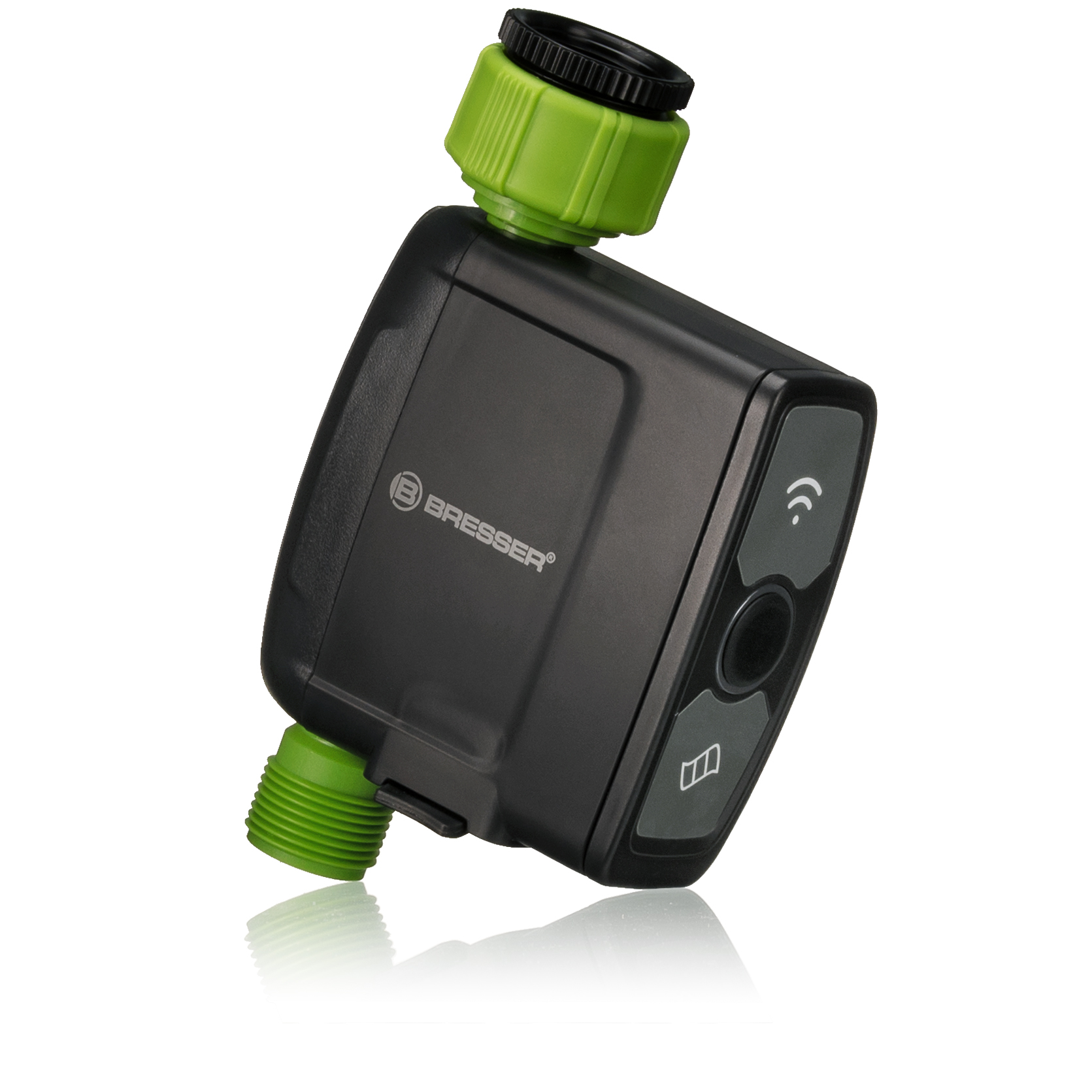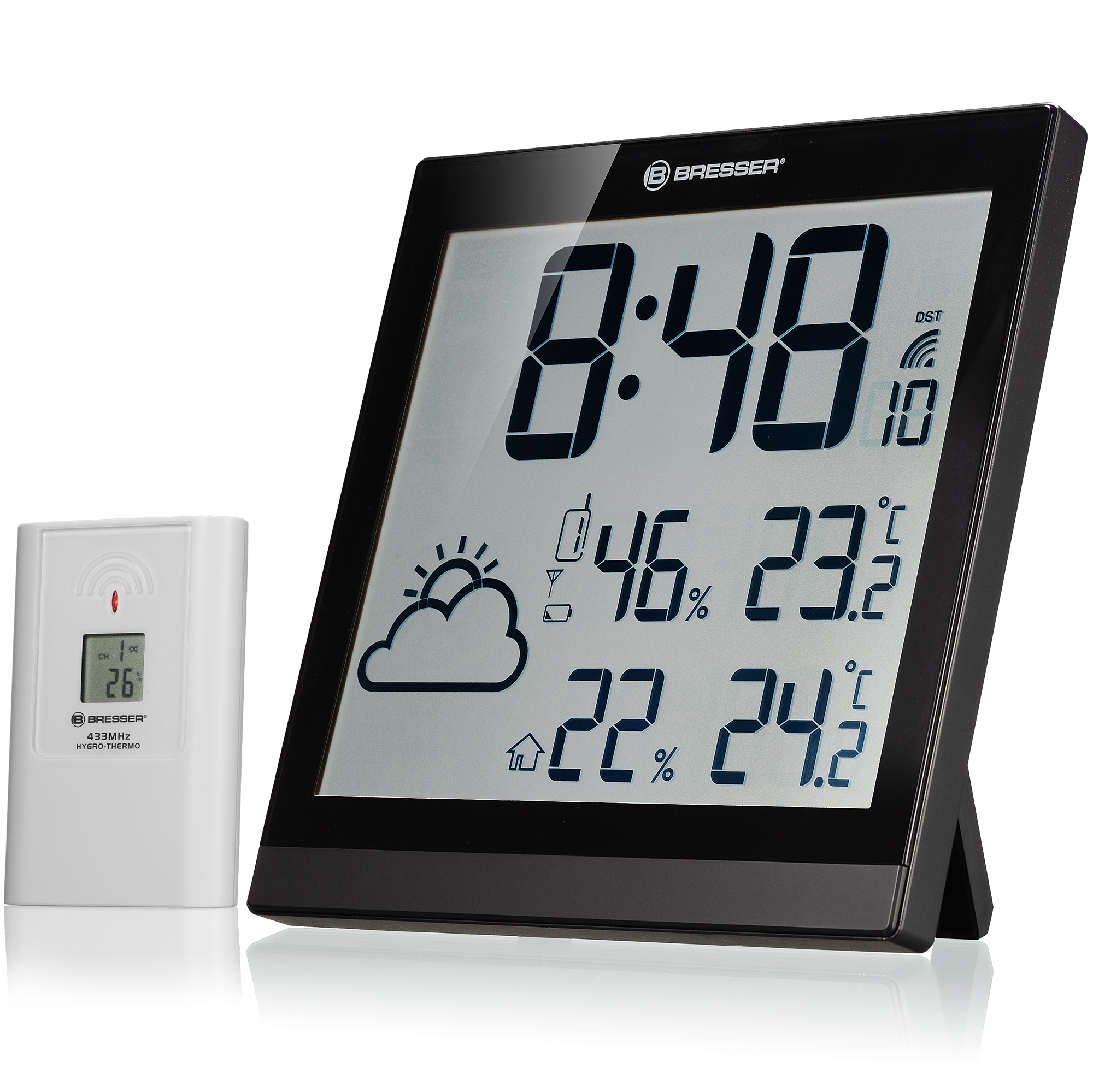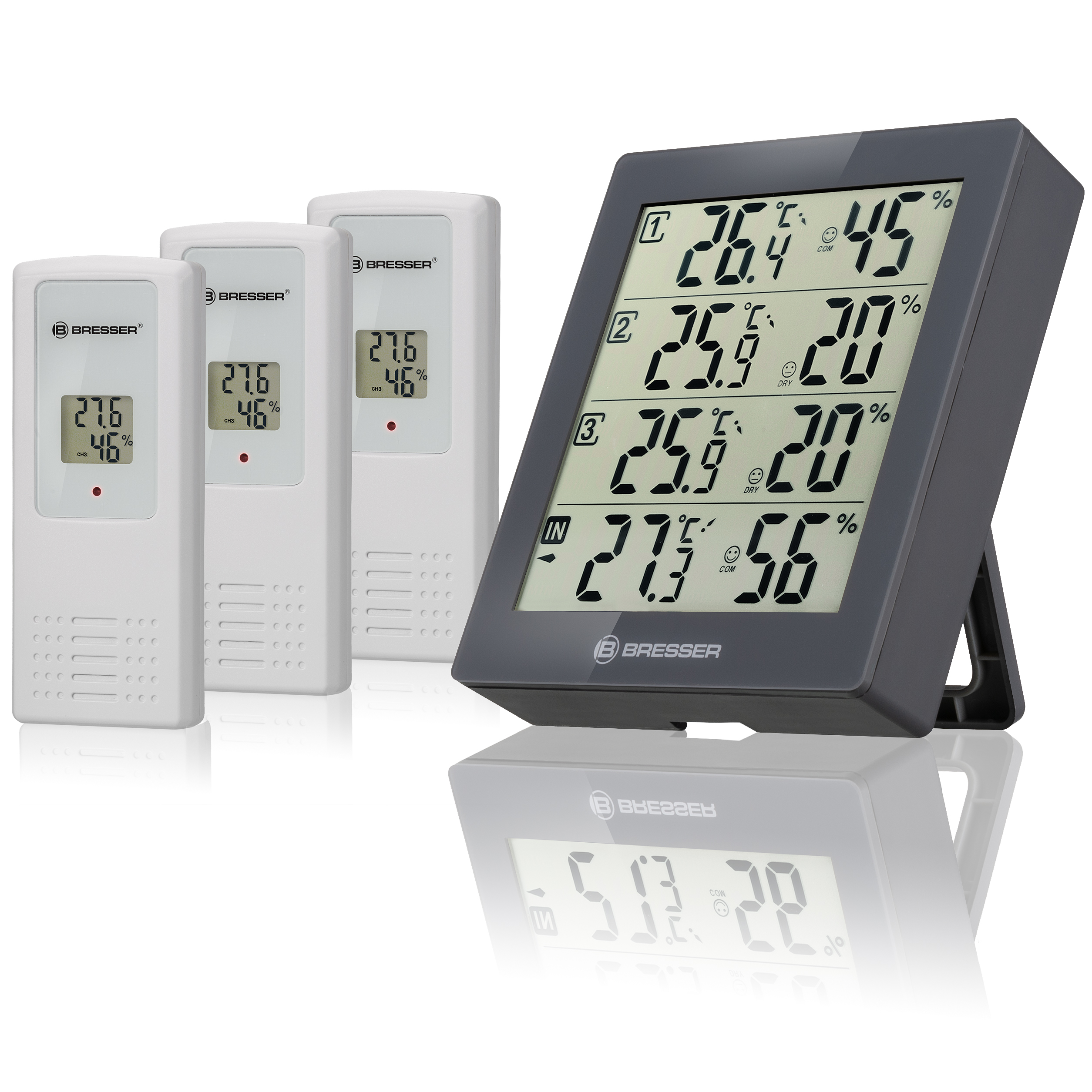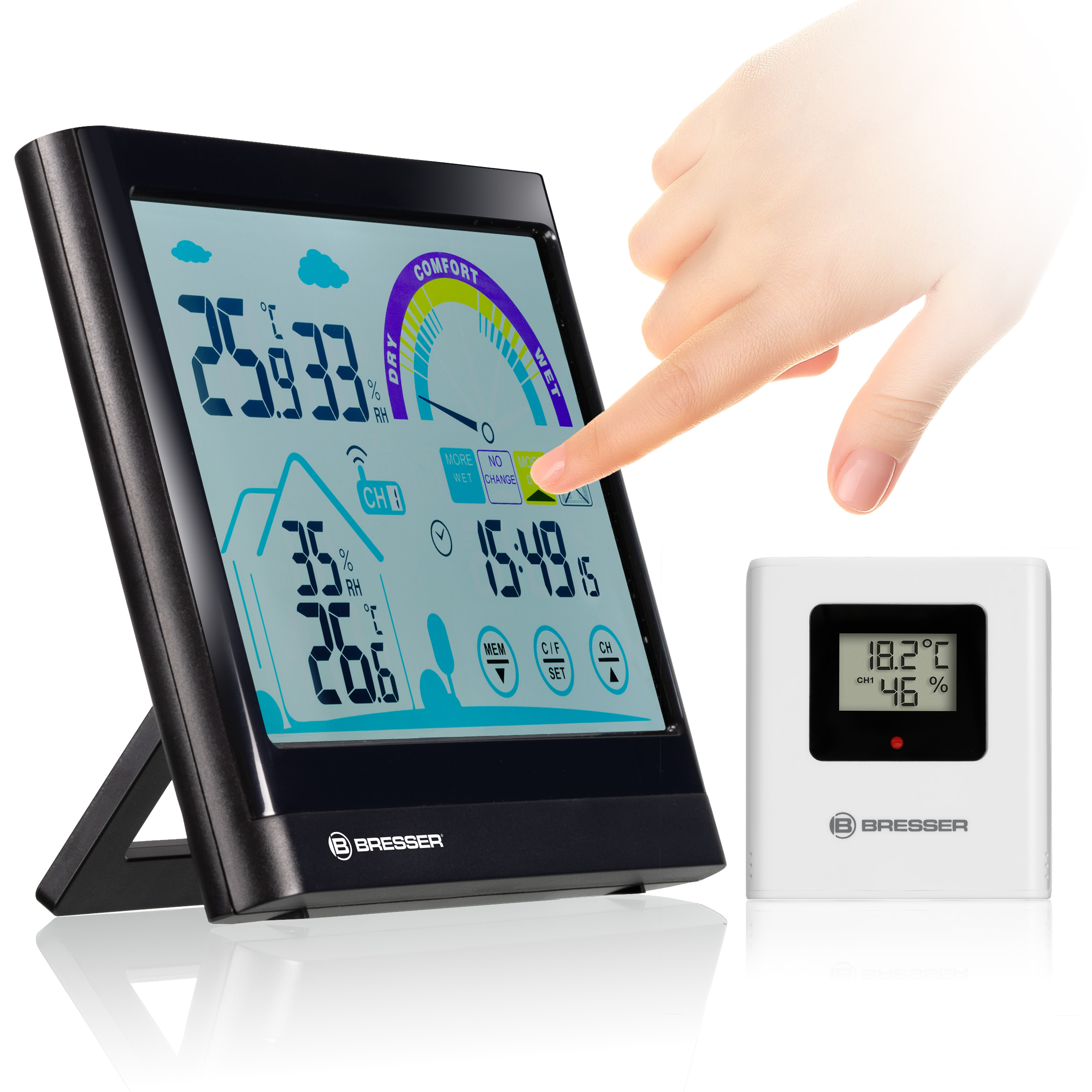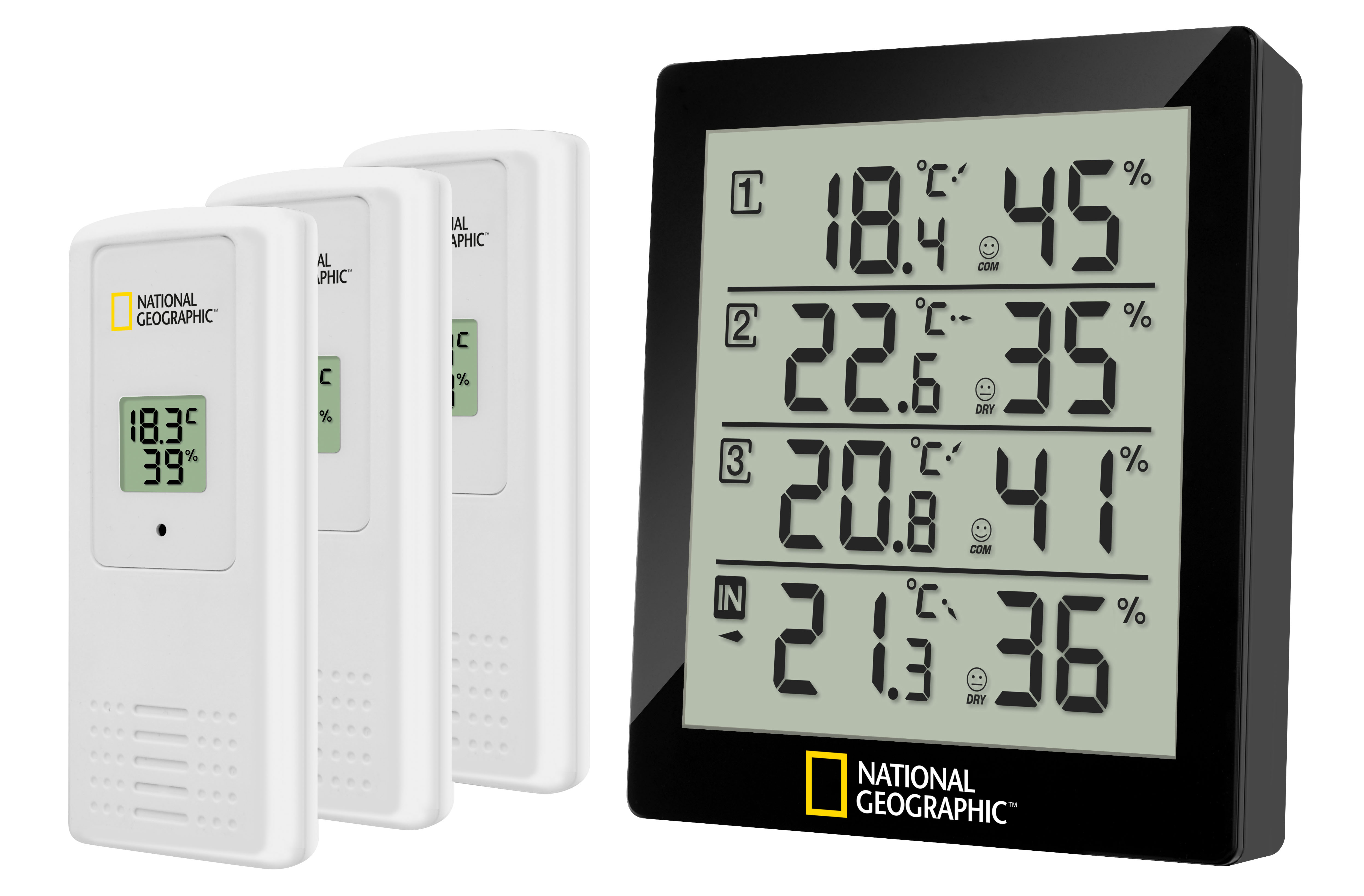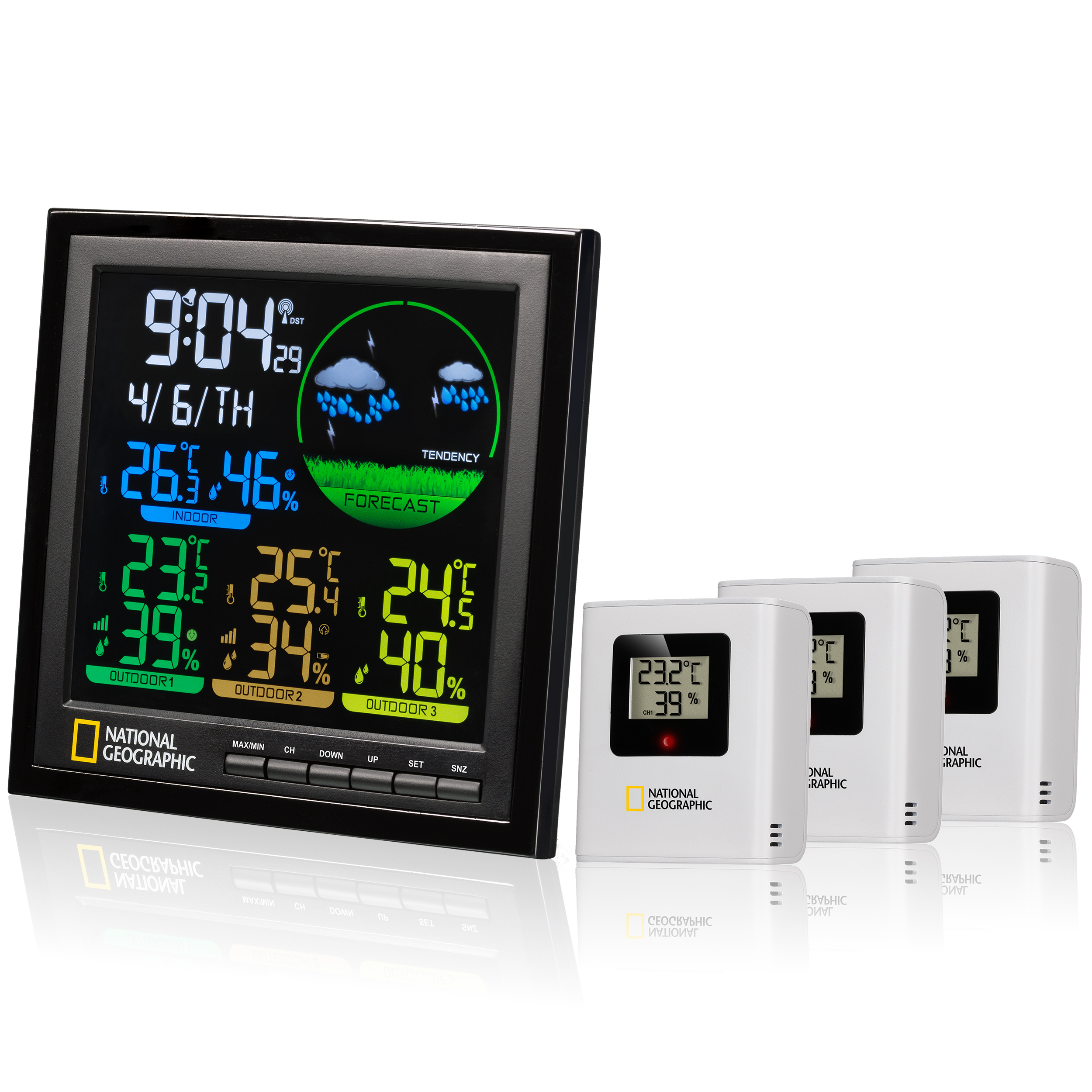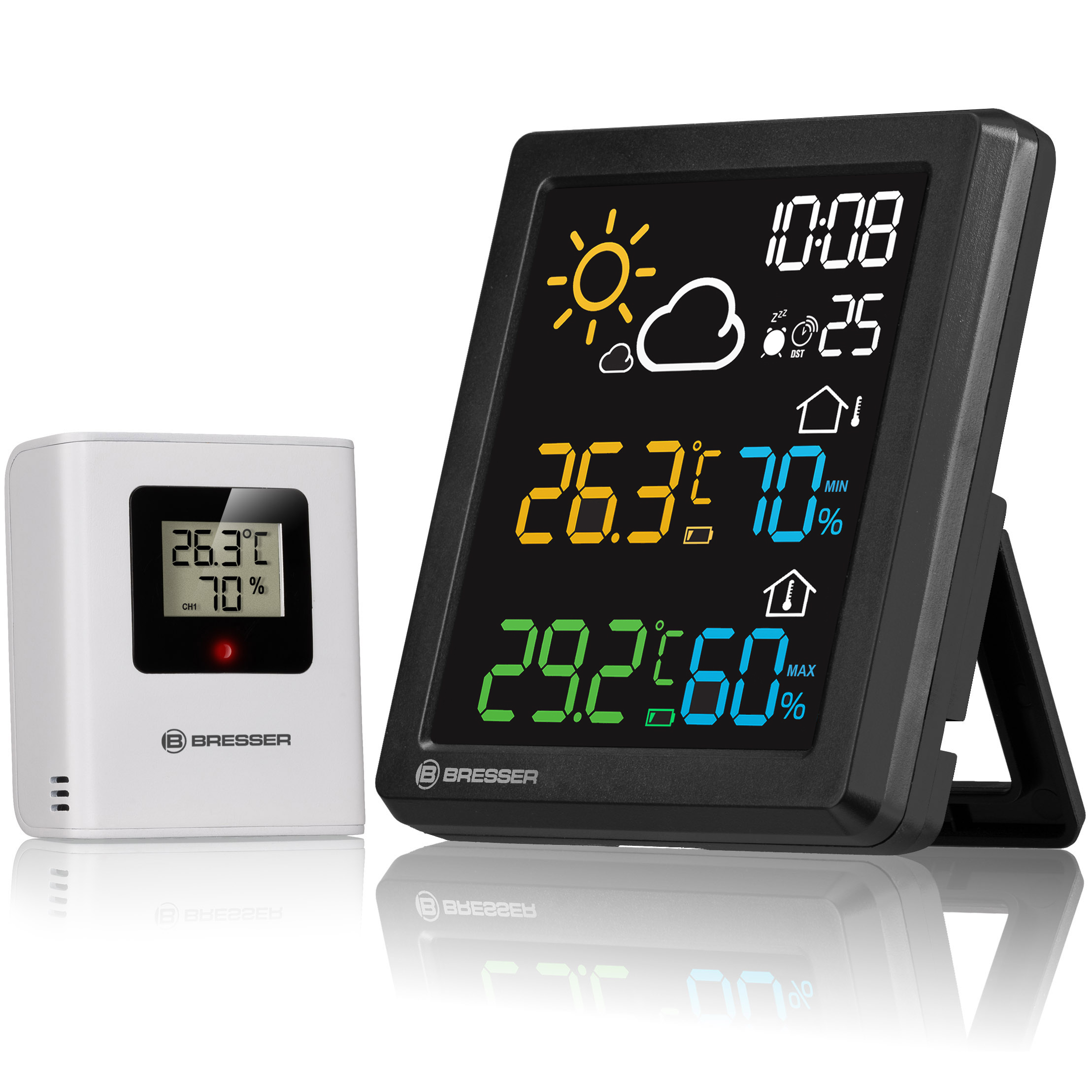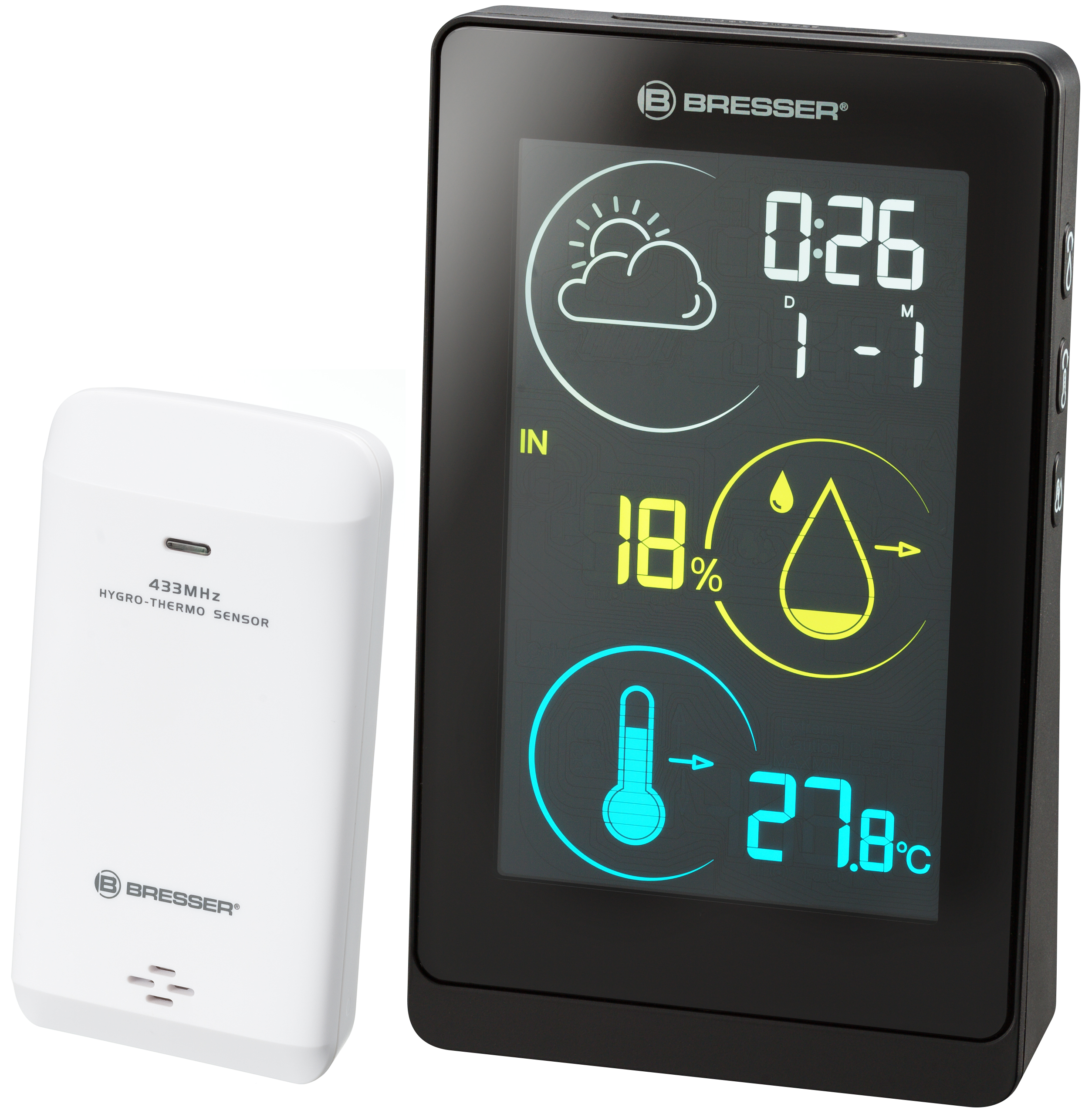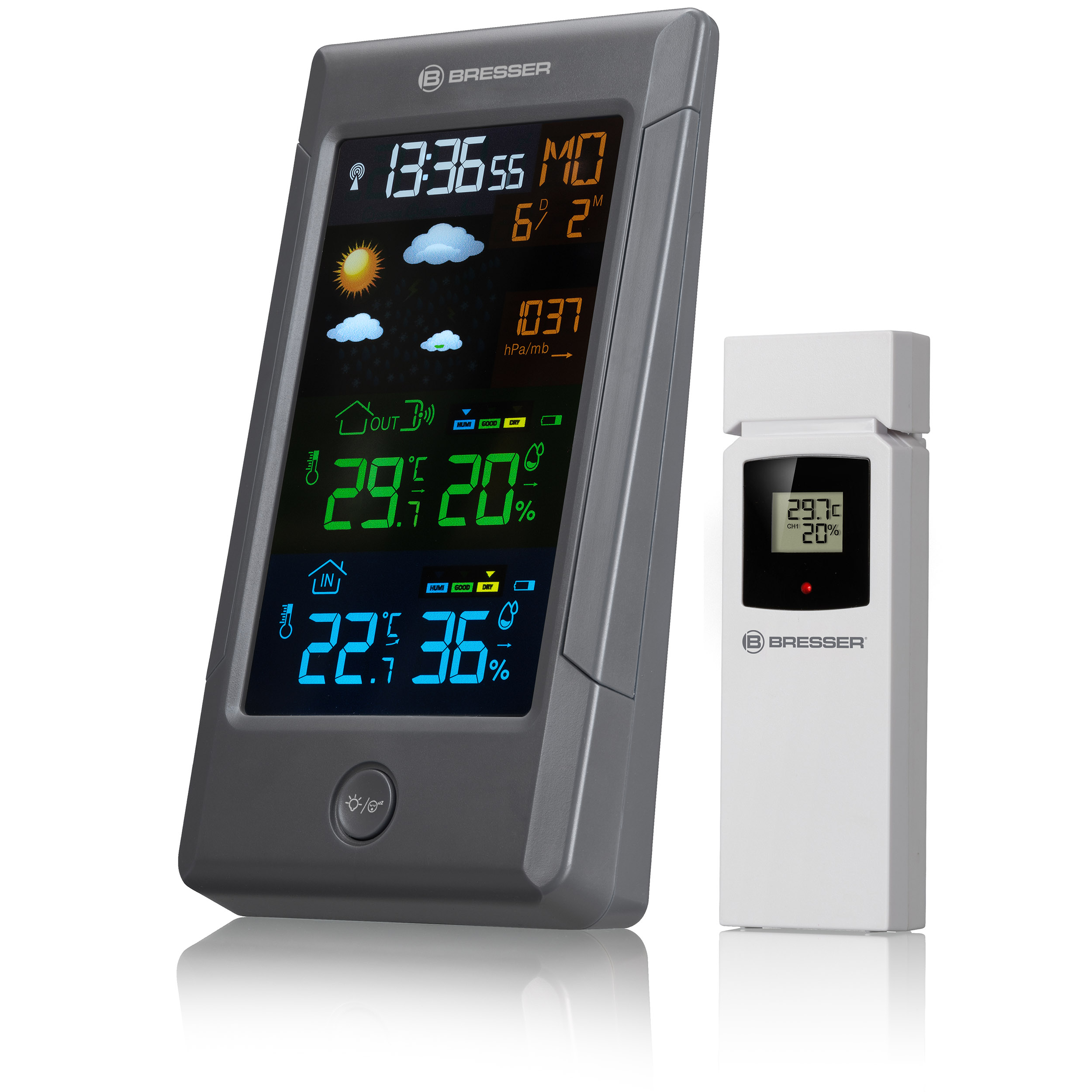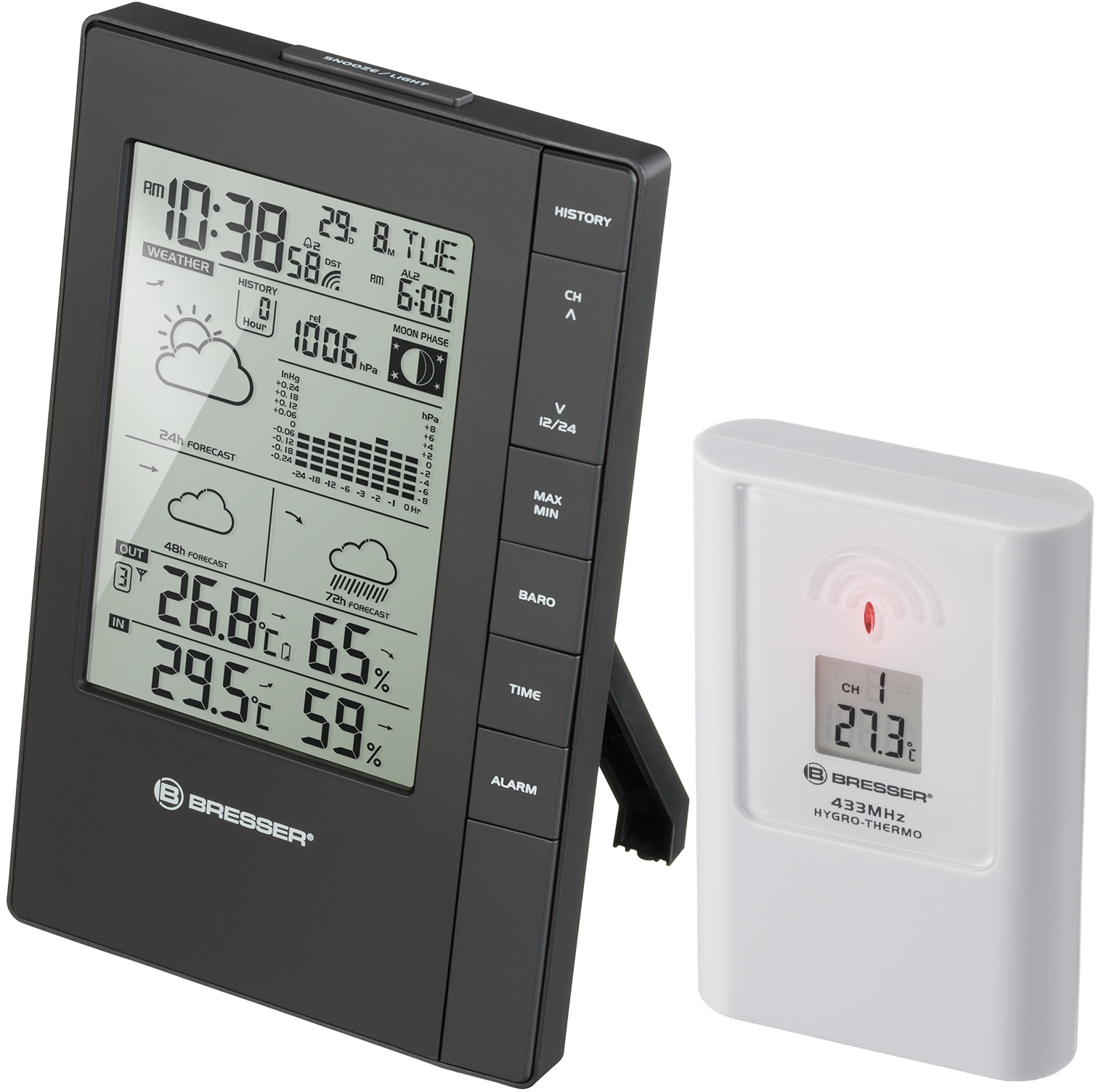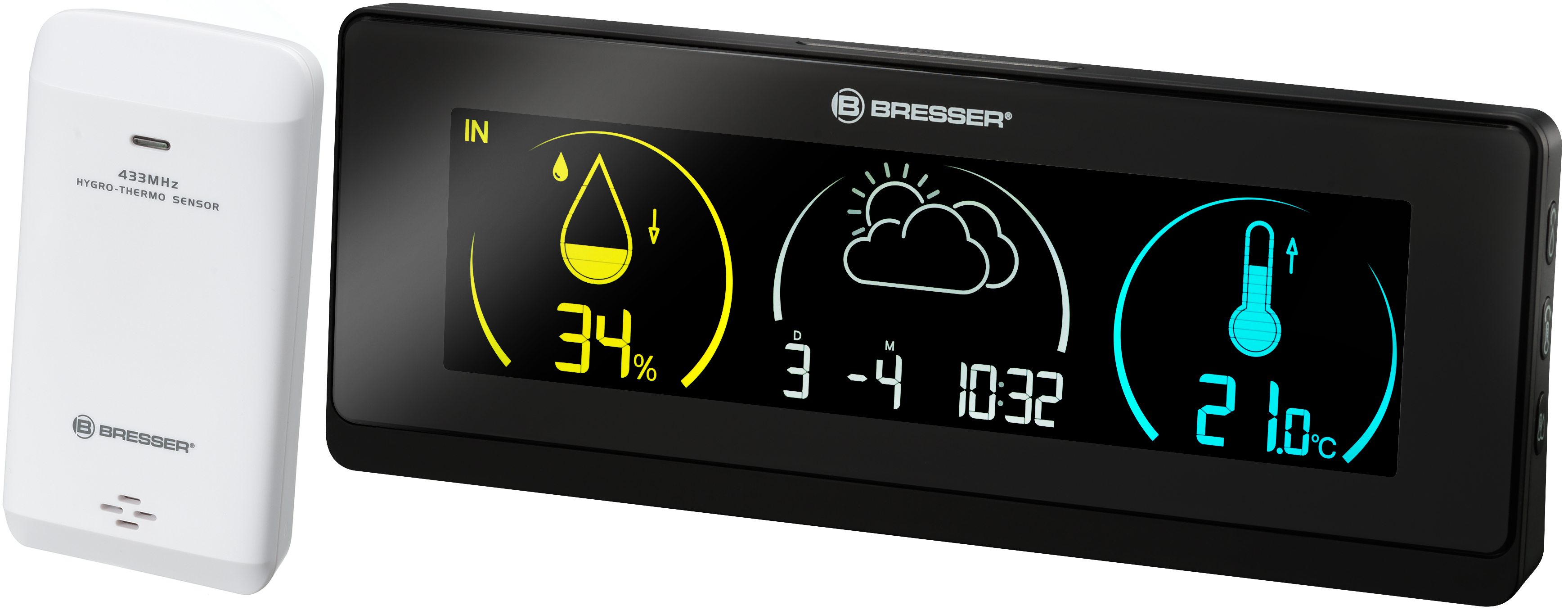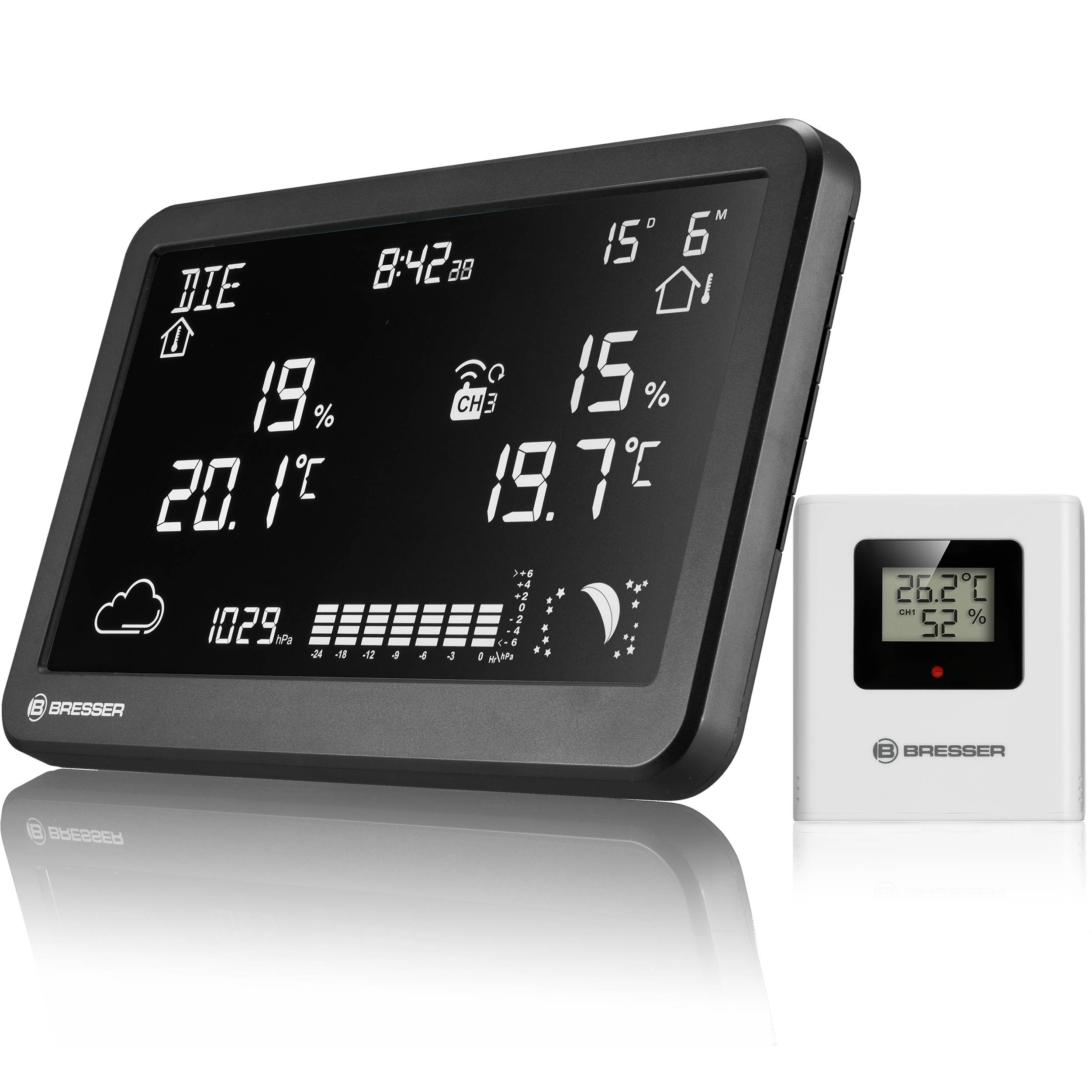
Dive into Local Weather Tracking with BRESSER UK's Home Weather Stations
Curious about the exact temperature outside your window or if it's the right humidity for your prized gardenias? You've come to the right spot. At BRESSER UK, our Home Weather Stations are tailor-made for those who like to keep a close watch on their local environment. These devices don’t just measure temperature, humidity, and air pressure—they come packed with features designed to make life easier and more predictable. Expect handy additions like trend forecasts based on air pressure changes, alerts for frosty conditions, and indoor climate indicators that suggest the best times for ventilation. Whether you're planning your day or tending to your greenhouse, our weather stations are your perfect companion for staying one step ahead of Mother Nature.
How Do I Choose a Weather Station for My House?
How Do Home Weather Stations Work?
Got questions like these? Find the answers below!
Weather Stations
How Do I Choose a Weather Station for My House?
When looking for the ideal home weather station, it's essential to consider how it will fit into your daily routine and meet your specific environmental monitoring needs. Here are several key questions to help you find a station that's a perfect match:
- What measurements do I need? Determine what weather elements are crucial for you to monitor. Our standard weather stations effectively track temperature, humidity, and air pressure. You need more? For extensive readings including wind speed, rainfall, or UV levels, our Weather Centres with advanced multi-sensor systems are ideal.
- What features would make my life easier? Look for features that will enhance your ability to monitor and respond to weather changes. This might include predictive forecasts, data storage for tracking weather trends over time, or frost alerts for a safe trip to work. Indoor climate indicators as well as ventilation recommendations can help prevent mould formation and too dry air in your home. These are just a few of the great features that make our weather stations such effective helpers in your day-to-day life.
- How many sensors do I need? Some weather stations come with multiple sensors, which can be placed in various rooms to monitor the indoor climate throughout your home. Livingroom, kitchen, bathroom, office, cellar, etc.—think about how many rooms you’d like to keep track of to ensure consistent comfort and energy efficiency.
- Does the display appeal to me? The visual appeal and clarity of the display are crucial factors to consider. Weather stations come with either colour or monochrome displays, each offering a different visual experience. Ensure that the layout, colour, and style of the display align with your preferences. Choosing the right type of display can greatly enhance your interaction with your weather station at home.
- What is the range of the wireless sensors? Ensure that the wireless sensors can communicate effectively with the base station over the distances expected in your property. This is especially important for larger homes or where sensors need to be placed far from the base station.
- Is the weather station expandable? When choosing your weather station, think about whether you might want to enhance its capabilities in the future. Many stations allow for the addition of more sensors or upgraded functionalities, making them adaptable to your evolving needs. If you're considering monitoring more areas or increasing the sophistication of your weather tracking, look for a model that supports expansion. Additional sensors can be found in the accessories section on the product page or in the category Outdoor Sensors.
- Should the weather station be powered by batteries or a mains plug? You can opt for battery-operated or mains-powered systems. Battery-powered units offer the flexibility of placement without the need for a power outlet, ideal if you prefer to hang the base station on a wall or position it in a location without easy access to power. On the other hand, mains-powered stations provide continuous operation without the need to change batteries. Colour displays, which provide a more vibrant interface, typically require a mains connection as they cannot be operated by battery alone. Consider your installation preferences and how they fit with the power options available.
By carefully considering these questions, you'll be better equipped to choose a weather station for home use that aligns with both your practical needs and personal preferences. That way you get the most out of your new weather monitoring tool.
How Do Home Weather Stations Work?
Wireless home weather stations are perfect for those quick, no-fuss checks on local weather conditions—no need for more complex setups like wind vanes or rain gauges. Here’s a look at their components and how they function:
- Outdoor Sensor: This is a multifunctional device combining a thermometer and a hygrometer, tasked with measuring the local outdoor temperature and humidity. The data is sent to the indoor base station using a wireless signal, typically at a frequency of 433 Hz.
- Base Station: Acting as the core of every wireless weather station, the base station displays data sent from the outdoor sensor. This includes readings of outdoor temperature and humidity. It also features several built-in sensors that add more layers of data:
- Integrated Thermometer: Measures the indoor temperature.
- Integrated Hygrometer: Monitors indoor humidity levels.
- Integrated Barometer: Tracks atmospheric pressure.
The information provided by the base station goes beyond simple numeric data; it’s crafted into useful features that enhance user experience. For instance, fluctuations in air pressure are analysed to predict local weather trends, providing insights into potential weather changes.
- Practical Features and Alerts: A variety of handy features round out many wireless weather stations. These include frost warnings that alert you to icy conditions potentially affecting roads or outdoor surfaces. Customisable alarms can be set to warn you of important changes, such as a rise in indoor humidity that might impact air quality or damage sensitive stored items. For those who love data, some models offer extensive historical data storage, allowing you to track and analyse weather patterns over time.
Where is the best place to install a weather station at home?
Choosing the right spots for your weather station's components is crucial for accurate readings. Here are some tips to help you set up both the outdoor and indoor units effectively:
Outdoor Sensor Placement:
- Seek Shade: Place the sensor in a shaded spot to prevent direct sunlight from affecting the temperature readings.
- Shelter from Rain: Ensure the sensor is protected from rain, which can lead to water damage and skew humidity measurements.
- Keep Within Range: Position the sensor within the effective range of the base station to ensure reliable signal transmission.
- Clear Line of Sight: Try to minimize obstructions between the outdoor sensor and the base station to enhance signal clarity.
Indoor Base Station and Sensor Placement:
- Ensure Good Airflow: Place the base station in an area with good ventilation to avoid any interference from stagnant air.
- Distance from Heat Sources: Avoid placing sensors near heat sources like heaters or stoves to prevent inaccurate temperature data.
- Avoid Sunlight: Keep the base station and sensors out of direct sunlight to avoid false readings from solar heating.
- Minimise Obstructions: Ensure a clear path between the indoor sensor and the base station for optimal signal strength.
Why BRESSER UK is Your Go-To for Home Weather Stations
At BRESSER UK, we get that an interest in weather goes beyond just stepping outside. Whether you're a hobbyist looking to record microclimates in your backyard or you simply want to decide whether to barbecue this weekend, we’ve got the gear for you. Our customer service team is just as passionate about meteorology as you are. They’ll ensure you’ll find the perfect setup for your needs and are happy to support you if you need help setting up the weather station.
Feeling like a weather wizard yet? Check out our awesome array of home weather stations at BRESSER UK and transform how you interact with the world outside your door!

